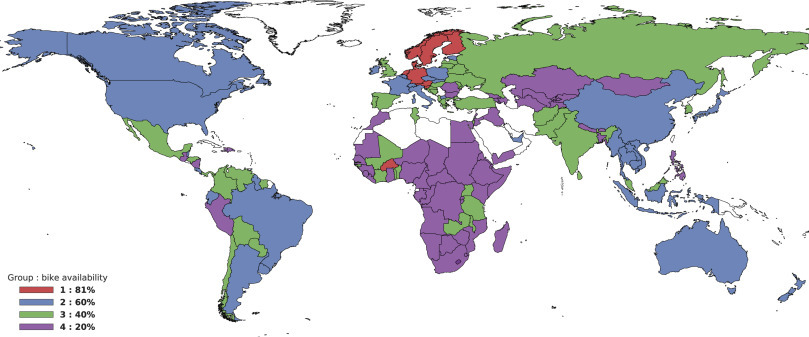Over the past 30 years, the number of bicycles in the world has fallen by 2 times - even without taking into account India and China

Researchers from Johns Hopkins University (USA) published in the journal " Transport and Health " work , from which it follows that for the last 30 years the number of households using a bicycle for transportation, fell about two times. The aim of the study was to calculate the patterns of distribution of bicycles across countries and find approaches to increase the effectiveness of propaganda of their use.
Advocacy for the use of bicycles is beneficial not only for health, but also contributes to saving non-renewable resources and improving the environment. Most often, it makes sense to advertise bicycle transport in those countries where it is most developed, however, in addition to this indicator, it is always useful to trace the dynamics of changes in bicycle use over time.
This was the largest study of bicycle use in many years. The statistics included 1.25 billion households from 150 countries, and the number of bicycles was tracked from 1981 to 2012. It turned out that in some countries the use of bicycles even increased over time, but in others it fell sharply. On average, their number, unfortunately, decreased.
According to the study, bikes are on average in 42% of households - which is at least 580 million bicycles worldwide. Most of all as a percentage of the number of households in northern Europe and Central Asia.

Availability of bicycles by country
At the same time, in absolute terms, most bicycles are in China and India - in the most populated countries of the world. And it is these countries that have a strong influence on global averages. The jumps in the number of bicycles relative to the number of farms in China were quite significant. In 1992, more than 97% of families had a bicycle. In 2007 - only 49%. By 2009, this number again grew to 63%.
But even if we exclude the most populated India and China from statistics, it still turns out that the number of bicycles in the world is constantly decreasing. In 1989, 60% of families had a bike. And by 2012, this figure was already 32%.
Researchers also conditionally divided countries according to the number of families owning bicycles into 4 groups. The first, the most “bicycle” group, included the countries with the largest number of bicycles - families owning them in this group of countries (and there are 9 in all) average 81% of the total. The second group (34 countries) included countries with an average percentage of 60, the third - 40% (45 countries), the fourth - 20% (62 countries).
In general, countries with a similar percentage were located not far from each other. But curious exceptions were revealed - for example, Burkina Faso fell into group 1, being surrounded by countries from groups 3 and 4. These are exactly the examples that show where it is worth making efforts to promote bicycle transport among the population.
